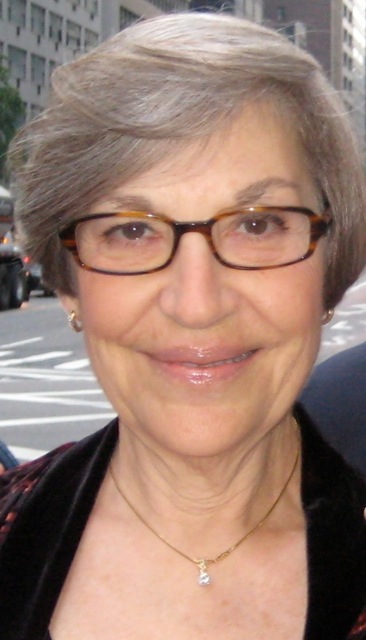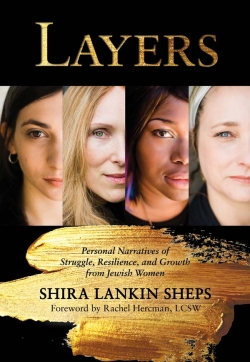In 2015, Shira Lankin Sheps, a clinically trained therapist, blogged about her long struggle with chronic pain. The overwhelming number of positive responses from other women prompted her to create an online magazine called The Layers Project. The success of this attempt to allow women to talk frankly about their challenges and triumphs led her to transcribe and edit 34 first-person accounts for this interesting and unusual anthology of life stories of Jewish women who, like Sheps, live in Israel.
Ms. Sheps explains in her enlightening introduction of Layers: Personal Narratives of Struggle, Resilience, and Growth from Jewish Women (The Toby Press) that we berate ourselves, believing others lead perfect lives, but “problems, struggles don’t go away.” Except in fairy tales, there are few happy endings. She encourages women to discuss often forbidden topics to remove the stigma. And having their voices heard by others through storytelling has an empowering impact on both themselves and others. Sheps writes:
"I believe that we are born to grow, and often, growth begins with struggle. I think that the more we can learn about how others cope – the more we can glean from their meaning-making and figure out how to apply those lessons to our own lives – the better off we are. I know that in a world that is becoming increasingly shallow, false, and full of facades, the way to move forward toward healing lies in sharing our rawness, vulnerability, and honesty."
The topics covered in Layers include infertility, difficult pregnancies and pregnancy loss, invitro fertilization, chronic pain, depression and other mental-health issues, caring for family members with special needs, exile from their homeland, military service, eating disorders, physical disabilities, and coping with their severe illnesses in their family. A Holocaust survivor describes her horrific war experiences; a younger woman describes the challenges of being the child of Holocaust survivors. A French woman tells us about her conversion to Judaism. Other topics include racism, anti-Semitism, sexual assault, extreme grief, death of children, and living through terrorist attacks.
The contributors to Layers are ethnically diverse. They include an Egyptian, Ethiopian, Nigerian, Dutch, French, Mexican (her mother descended from a Spanish converso family), an American Black, and an Afro-Latino (her mother a southern black, her grandfather an Egyptian Jew whose family perhaps came from Ethiopia). Although they come from different backgrounds, most lean toward Orthodox Judaism, whether raised in that tradition or coming to it later in life.
Many of the women describe their difficult adjustment as refugees making to Israel, even though they felt a calling to settle there. Sheps, who herself had only recently made aliyah at the time she began work on this book, reminds us how brave one has to be to leave one’s old life behind and start anew to leap into the unknown. She writes:
"Ultimately, I learned that there are many types of exile. There is the exile of being kicked out of your birthplace, the exile of isolation and silence, and the exile of feeling like you don’t belong where you are. Individual and national exiles blur in personal stories. Luckily, so do the blessings of redemption. Inherent in redemption is the promise of healing, a healing of things that pain us and keep us on the outside of what is sacred to us."
Sheps does not say explicitly why she chose to use the word Layers in the book’s title. Perhaps it’s meant to emphasize the need to dig under the surface of someone’s life in order to understand his or her underlying problems and conflicts.
As in any anthology, composed by different people, some of the chapters are more compelling and better written than others, but it is an excellent vehicle to help readers confront challenging serious situations in their own lives.
Sheps and her chief editor, clinical psychotherapist Rachel Hercman, provide at the end of each chapter two or three discussion questions relevant to the specific topic featured in that selection. They also include meditation and mindfulness exercises. In addition, a foreword by Ms. Hercman helps explain the purpose and methodology of the book and why it was edited in a way that allowed contributors to speak in her own voices.



